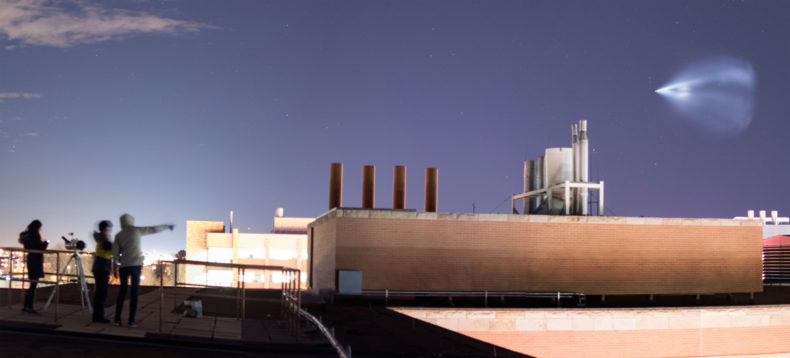
The other night we were supposed to see a meteor shower with fireballs. That’s what they predicted, fireballs. My gal and I went out on the deck in the late fall chill, dropped a single sleeping pad, covered ourselves in a blanket, and stared up at a midnight quarter moon.
The Taurid meteor shower and its fireballs would have been visible between Aldebaran and the Pleiades, and a little to the right, except for the moon in our faces. We couldn’t see a thing around it, holding up our hands, shielding our eyes.
We live near the Colorado-Utah line, which is some of the clearest and darkest there is. The nearest town is certified as a Dark Sky Community, granting international recognition, a big deal for a high desert burg of 526 people. We live over a hill out of town and down near the rim of a canyon that looks across a horizon of nobody. Stars are numerous and crisp. Looking up, she calls the Milky Way the Galactic Chiropractor.
We’ve been watching the night sky for most of human evolution, nothing but space overhead. It’s not a habit you shake. We see supernovas and comets, the sky busy with far more than its seasonal cadence. You’ll notice Mars the night it enters retrograde. One night it’s moving ahead through the stars, and the next it’s turned around and swimming the other way.
Cities have parks and astronomy clubs. Giant telescopes are wheeled out where you can marvel at the bands of Jupiter, and Galilean moons lined up like ducks in a row. It doesn’t take infinite darkness to see the sky. But it helps. It keeps your eyes turned upward.
A couple years ago on an early February evening I came home with groceries and the stars were brilliant. A waxing gibbous remained below the eastern horizon, leaving the sky at its darkest. One of the stars was out of place. Airplane, I thought, and continued toward the front door. Was it an airplane, though?
I stopped before the door and looked back at the southern horizon where a diamond-bright object glowed brighter and brighter. It had the wrong light, milky, hazy, as if burning through something. There were no clouds, not a skim of moisture to reflect off of. The light began to move, and behind it a curtain unveiled. The object shed a comet tail, a glowing skirt that took up a corner of the sky. I set groceries on the ground and watched as the light spread.
I was seeing the SpaceX Falcon Heavy rocket in its final burn, launching out of Earth orbit for Mars. I was looking into its thrusters as they fired one last time, blasting a glowing veil back toward Earth.
This is why you look up. Something’s always happening out there.
On the night of the Taurids and their fireballs, the only movement we could see was air traffic, high flyovers. Elsewhere, the meteor shower was called a success, maybe where the air was more dense with light pollution, toning down the lunar blaze.
A plane flying east to west, Denver to Los Angeles perhaps, was heading for the moon. We started taking bets, calculating the trajectory as flashing lights arced through stars. Our voices rose as if we were at a sporting event and our team was about to score. We both shouted when a wing of the plane clipped the egg-shaped moon. The outline of its right engine was sharp enough to see from four miles away.
“Fuck the fireballs,” she said, “this is why we came out!”
Photo: Colorado State Astronomy Club students witnessing the third burn of the SpaceX Falcon Heavy rocket Feb. 6., 2018. Credit: Norman Revere, Colorado State University.
I love this intimate glimpse of sky and expansive invitation to look up. Thanks, Craig.
At the moment, I’m reading Soul of Nowhere, just finished the piece about the Labyinth. Your journey to the snake and its map of the cosmos blew me away. This piece today is right in tune with the other one. Both make me yearn to drive out to the middle of Nevada, to a place called Burnt Cabin Summit, where the sagebrush sea undulates across the valley, and the Milky Way is so bright and so close, you feel you could touch it. Thanks for this peek into wonder, Craig.
Very hard to see rings of Saturn without 40X of telescope, but you can see that there is something a little wonky about that planet. Wonder what the ancients thought?